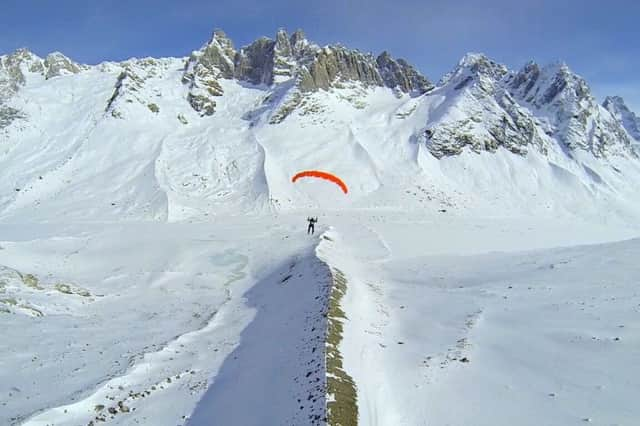Roger Cox: Surfing the ends of the Earth


I’m not sure how it happened, but at some point over the last 20 years or so, surfing in cold, grey, inhospitable places became hip. Not just accepted by the rest of the surfing world, not just tolerated as a sort of weird, buck-toothed second cousin of the warm water/blue skies version of the sport, but actually actively embraced and celebrated by the surfing media and even, to a lesser extent, the mainstream media as well. Looking back, perhaps the key catalyst was the discovery of Mavericks – a heavier-than-hell death-wave breaking off Half Moon Bay in the chilly, sharky waters of Northern Califiornia which, in the mid-1990s, became the epicentre of the big wave riding scene outside Hawaii. Or perhaps this gradual shift in perception was simply the inevitable side-effect of a process whereby, as all the best warm-water surf spots slowly turned into overcrowded bear pits, surfers were forced to look to chillier climes for the empty perfection they craved.
Either way, there’s no denying that surf mags have radically altered their colour palettes in the last two decades. Whereas the first copy of Surfer magazine in my collection, purchased all the way back in 1994, almost exclusively features pictures of people surfing warm-looking waves of varyingly seductive shades of cobalt and turquoise, today’s surf mags are just as likely to feature shots of waves in ominous shades of grey.
Advertisement
Hide AdCase in point: a recent edition of Surfer which carried a feature on Norway’s Lofoten Islands by photographer Chris Burkard. In Burkard’s stunning pictures, pretty much everything about this Arctic archipelago looks grim and foreboding – everything, that is, except the waves, which look well worth getting frozen half to death for. Would Burkard have managed to get that story commissioned by Surfer, the so-called Bible of the sport, back in 1994? Possibly not.
Anyway, the film version of Burkard’s adventure, entitled Arctic Swell – Surfing the Ends of the Earth, is screening as part of this year’s Dundee Mountain Film Festival, which runs from 26-28 November in the city’s Bonar Hall. In it, Dane Gudauskas and Keith Malloy are the lucky pro surfers who get to surf dreamy Arctic line-ups all by themselves (albeit, once they’ve stumbled through blizzards and snowdrifts to get there.)
“When you’re first paddling out it’s kind of a shock,” says Gaduskas, “and then within two minutes you start feeling your core temp drop.”
The film, though, is really all about Burkard – a self-confessed “coldwater fanatic” and what drives him to drag professional waveriders to some of the most inhospitable places on the planet so he can take pictures of them riding frigid waves.
“I know the surfers out in the water are suffering just as much as I am, if not way more,” he says, “so you have this extremely heavy task on your shoulders of making sure you document what’s going on accurately and appropriately and doing them justice.”
Subtext: if somebody gets a great wave this close to the North Pole, when they come stumbling out of the water blue-lipped and semi-hypothermic and shout at you across the beach “did you get it?” it’s never, ever OK to say “er, sorry, no, I forgot to take the lens cap off.”
Advertisement
Hide AdArctic Swell is part of what could almost be described as an Arctic and Antarctic mini-strand in this year’s Dundee programme. Also on the Saturday, in the Irvine Butterfield Memorial Lecture, the broadcaster and historian David Munro will give a talk on the achievements of William Spiers Bruce, the Scottish oceanographer, naturalist and polar explorer who led the Scottish National Antarctic Expedition of 1902-4 and also climbed mountains wherever he went.
Then, on the Sunday, there will be a screening of Niall and Finn McCann’s film Arctic Air, in which the intrepid brothers head off to the Caledonian Alps in Eastern Greenland for a spot of ski mountaineering, ice climbing and speed flying (yes, that thing where you ski off a cliff with a paragliding wing strapped to your back and hope for the best.) And finally, to bring the festival to a close, mountaineering superstar Leo Houlding will be on hand, on the Sunday night, to discuss – among other things – his remarkable first ascent of a route called Reflections on the intimidating, 1,200m high Mirror Wall, also in Greenland. Book now to avoid disappointment.
• For a full programme, or to book tickets, visit www.dundeemountainfilm.org.uk